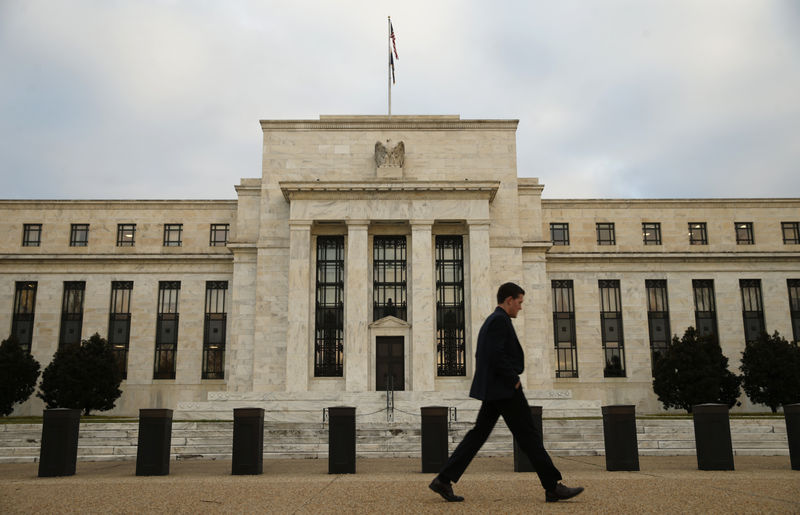(Bloomberg) -- Federal Reserve officials judged uncertainties and downside risks to the outlook for the U.S. economy had increased significantly when they gathered in June, strengthening the case for an interest-rate cut.
“Many judged additional monetary policy accommodation would be warranted in the near term should these recent developments prove to be sustained and continue to weigh on the economic outlook,’’ according to the minutes of the June 18-19 Federal Open Market Committee released Wednesday in Washington.
“Several” policy makers said a near-term rate cut was warranted from a risk-management perspective because it “could help cushion the effects of possible future adverse shocks to the economy.”
The release follows Chairman Jerome Powell’s testimony to lawmakers earlier in the day, which pushed the central bank closer to cutting interest rates this month. He said the economy continues to face downside risks including trade tensions and sluggish inflation.
Worries about inflation also featured prominently in the minutes. Many officials noted not only that risks to inflation were weighted to the downside, but also that measures of inflation expectations “could be somewhat below levels consistent with the Committee’s 2% inflation objective.”
Inflation, measured by the Fed’s preferred gauge, was 1.5% in the year through May and has been below target for most of the past seven years.
Further Deterioration
Not all Fed officials were on board with a near-term rate cut. “Several” policy makers indicated that while risks had increased, they would want to see a further deterioration in the outlook before supporting easier policy.
In addition, “some participants suggested that although they now judged that the appropriate path of the federal funds rate would follow a flatter trajectory than they had previously assumed, there was not yet a strong case for a rate cut,” the minutes said.
At the June meeting, policy makers submitted new rate projections showing eight of 17 officials expected at least one cut in 2019. The gathering marked the second shift by the FOMC in six months.
The central bank raised the benchmark lending rate to 2.25% to 2.5% over four hikes in 2018 in what they called a policy normalization strategy. In January, as the global economy slowed, officials said they would be “patient’’ with future adjustments, signaling they had put rates on hold.
In June, they pivoted to an easing bias, saying they would “closely monitor’’ incoming information and “act as appropriate to sustain the expansion.’’
©2019 Bloomberg L.P.
